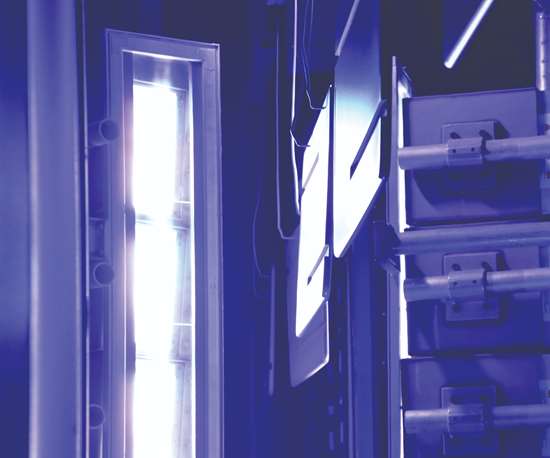Effect of Modified Mica Filler on Anticorrosion Properties of UV Cured Coatings

As an important part of the anti-corrosion coating, the anti-corrosion filler is one of the decisive factors affecting the corrosion resistance of the coating. Divided from the mechanism of action, anti-corrosion fillers mainly include active anti-corrosion fillers, sacrificial anti-corrosion fillers and shielding anti-corrosion fillers. Among them, shielding anti-corrosion fillers such as clay, boron nitride, mica, etc., these fillers will not react with the corrosive medium, and their unique lamellar structure can form a multi-layer dense barrier layer, effectively preventing the penetration of the corrosive medium and providing a good coating for the coating. Anti-corrosion effect, so it has been widely used.
As a silicate mineral, mica has excellent acid and alkali resistance, heat resistance and chemical stability. The natural ultra-fine crystal granular and lamellar structure enables mica to be easily processed into scaly ultra-fine powder. The thickness of the lamella can be controlled below 1 μm, which is difficult to achieve with artificial synthetic flakes such as glass flakes and stainless steel flakes. It is an ideal anti-corrosion filler, so it has received extensive attention.
The influence of the size effect of mica filler on the diffusion behavior of water in epoxy coatings was explored by mass method and electrochemical impedance method, and it was proved that suitable mica size can effectively block the penetration of water molecules; Meng et al. After modification, a mica-modified epoxy resin coating was prepared, and the failure behavior of the coating under the action of marine alternating hydrostatic pressure (AHP) was explored. It was found that surface modification could effectively improve the dispersion of mica in the coating.
Mica is used as anti-corrosion filler, anionic dispersant BYK-111 composed of non-polar negatively charged hydrocarbon chain part and polar hydrophilic group, and non-polar positively charged alkoxyammonium salt compound are used Different types of wetting and dispersing agents, such as BYK-180, phosphate ester salt type polymer BYK-145, and high molecular weight block copolymer BYK-168 containing pigment affinity groups, modify the surface of mica. And control the amount of mica added to explore the effect of mica filler on the curing rate, curing degree, adhesion, hardness and other properties and anti-corrosion performance of light-cured coatings. The results show that:
(1) The addition of mica filler has little effect on the degree of light curing and curing rate; the addition of mica can improve the adhesion of the coating, from level 1 to level 0, the impact on the hardness of the coating depends on the amount of mica in the coating. degree of dispersion;
(2) The unmodified mica has poor dispersibility in the coating and is easy to agglomerate. Not only can it not improve the corrosion resistance of the coating, but it will lead to a large number of defects in the coating and accelerate the occurrence of corrosion; different types of wetting and dispersing are used. The surface modification of mica by the agent can greatly improve the dispersibility of mica in the coating, thereby improving the anti-corrosion performance of the constructed light-cured coating.
(3) Amphiphilic high molecular weight block copolymer BYK-168 wetting and dispersing agent (high molecular weight block copolymer containing pigment affinity group) has the best modification effect on mica filler, 30% The addition amount of modified mica is the optimal addition amount, and the prepared photocurable coating is resistant to neutral salt spray for more than 1000h.
